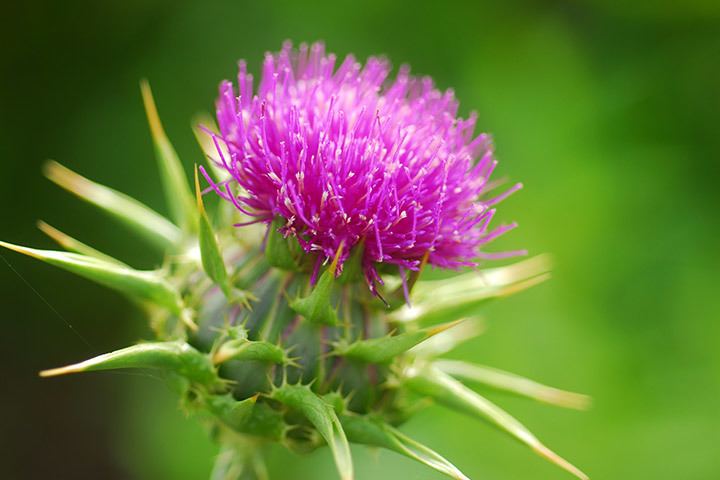 | ||
Thistle is the common name of a group of flowering plants characterised by leaves with sharp prickles on the margins, mostly in the family Asteraceae. Prickles often occur all over the plant – on surfaces such as those of the stem and flat parts of leaves. These are an adaptation that protects the plant from being eaten by herbivores. Typically, an involucre with a clasping shape of a cup or urn subtends each of a thistle's flowerheads.
Contents
- Milk thistle benefits for a super healthy liver
- Taxonomy
- Economic significance
- Ecology
- Medical uses
- Scottish thistle
- Thistle of Lorraine
- Place names
- References
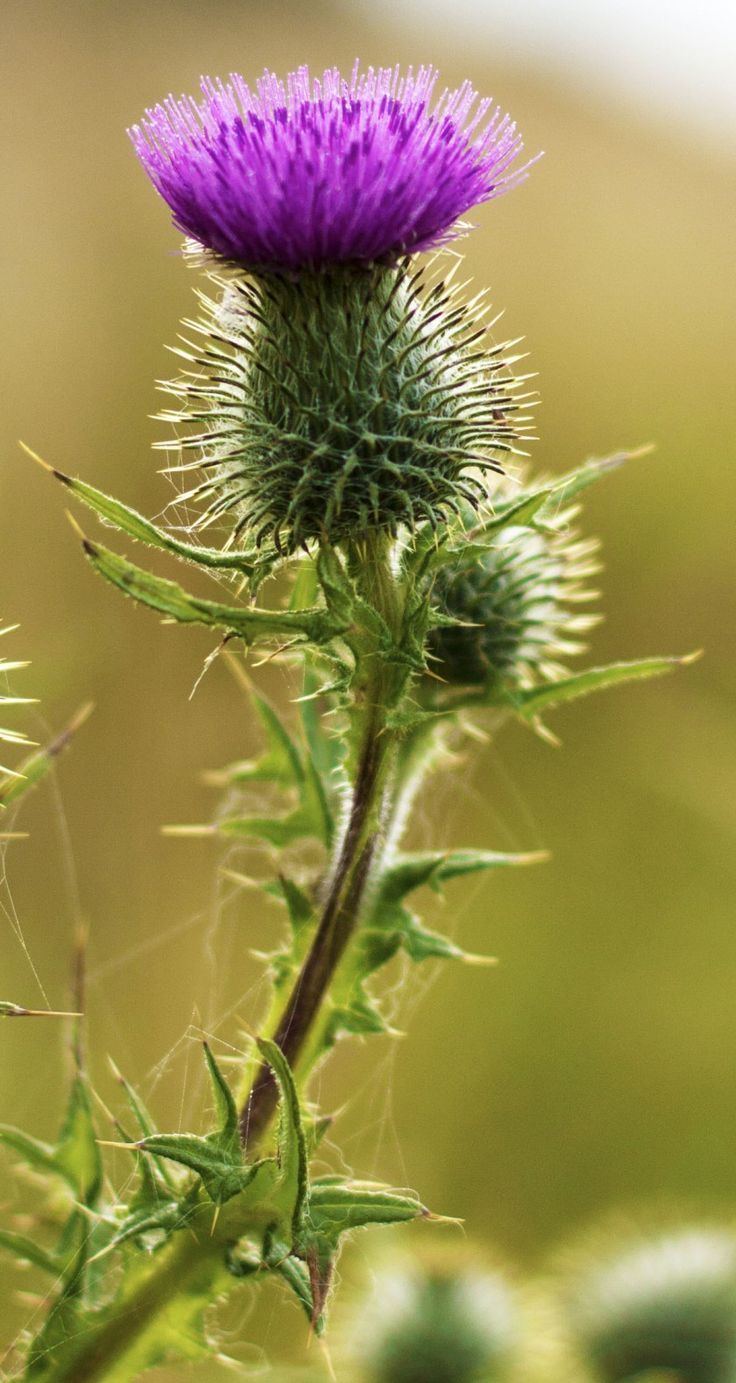
The term thistle is sometimes taken to mean exactly those plants in the tribe Cynareae (synonym: Cardueae), especially the genera Carduus, Cirsium, and Onopordum. However, plants outside this tribe are sometimes called thistles, and if this is done thistles would form a polyphyletic group.
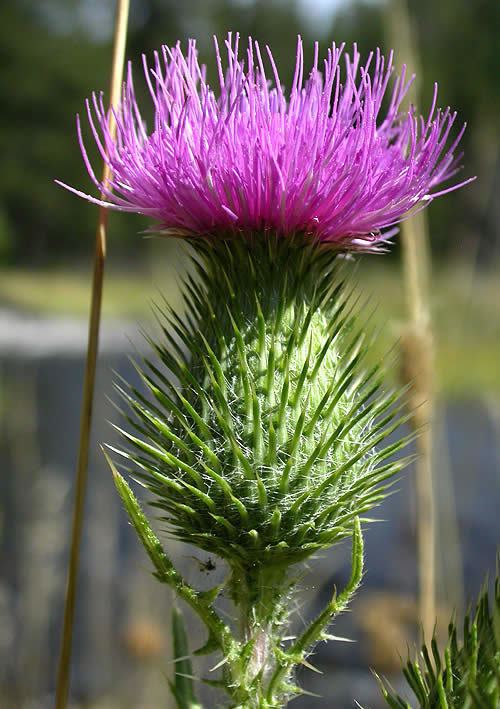
Thistle is the floral emblem of Scotland and Lorraine, as well as the emblem of the Encyclopædia Britannica.
Milk thistle benefits for a super healthy liver
Taxonomy
Genera in the Asteraceae with the word thistle often used in their common names include:
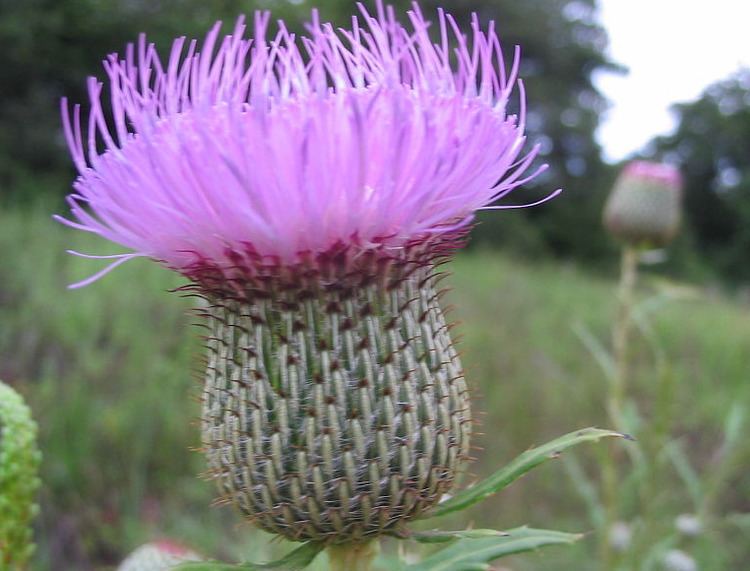
Plants in families other than Asteraceae which are sometimes called thistle include:
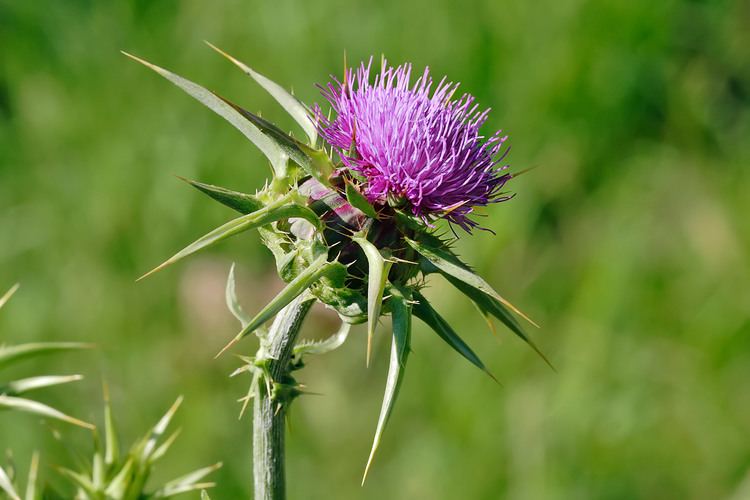
Economic significance
Thistles, even if one restricts the term to members of the Asteraceae, are too varied a group for generalisation; many are troublesome weeds, including some invasive species of Cirsium, Carduus, Silybum and Onopordum. Typical adverse effects are competition with crops and interference with grazing in pastures, where dense growths of spiny vegetation suppress forage plants and repel grazing animals from eating either the thistle plants or neighbouring forage. Some species, although not intensely poisonous, do affect the health of animals that swallow more than small amounts of the material.
Conversely however, the genus Cynara includes commercially important species of artichoke and some species regarded as major weeds are commercial sources of vegetable rennet used in commercial cheese making. Similarly, some species of Silybum that occur as weeds, also are cultivated for seeds that yield vegetable oil and pharmaceutical compounds such as Silibinin.
Other thistles that nominally are weeds are important honey plants, both as bee fodder in general, and as sources of luxury monofloral honey products.
Ecology
Thistle flowers are favourite nectar sources of the pearl-bordered fritillary, small pearl-bordered fritillary, high brown fritillary, and dark green fritillary butterflies. Thistles (and thistle-seed feeders) also attract goldfinches.
Some thistles (for example Cirsium vulgare, native to Eurasia), have been widely introduced outside their native range. Control measures include Trichosirocalus weevils, but a problem with this approach, at least in North America, is that the introduced weevils may affect native thistles at least as much as the desired targets.
Medical uses
Maud Grieve recorded that Pliny and medieval writers had thought it could return hair to bald heads and that in the early modern period it had been believed to be a remedy for headaches, plague, canker sores, vertigo, and jaundice.
Scottish thistle
The thistle has been the national emblem of Scotland since the reign of Alexander III (1249–1286) and was used on silver coins issued by James III in 1470. It is the symbol of the Order of the Thistle, a high chivalric order of Scotland. It is found in many Scottish symbols and as the name of several Scottish football clubs. The thistle, crowned with the Scottish crown, was the symbol of seven of the eight former Scottish Police Services (from which a new national Police Service was formed in 2013), the sole exception being the former Northern Constabulary. The thistle is also the emblem of Encyclopædia Britannica, which originated in Edinburgh, Scotland.
It is also used to symbolise connection with Scotland overseas. For example, in Canada, it is one of the four floral emblems on the flag of Montreal; in the US, Carnegie Mellon University features the thistle in its crest in honour of the Scottish heritage of its founder, Andrew Carnegie.
According to a legend, an invading Norse army was attempting to sneak up at night upon a Scottish army's encampment. During this operation one barefoot Norseman had the misfortune to step upon a thistle, causing him to cry out in pain, thus alerting Scots to the presence of the Norse invaders. Some sources suggest the specific occasion was the Battle of Largs, which marked the beginning of the departure of King Haakon IV (Haakon the Elder) of Norway who, having control of the Northern Isles and Hebrides, had harried the coast of the Kingdom of Scotland for some years. Which species of thistle is referred to in the original legend is disputed. Popular modern usage favours cotton thistle (Onopordum acanthium), perhaps because of its more imposing appearance, though it is unlikely to have occurred in Scotland in mediaeval times; the spear thistle (Cirsium vulgare), an abundant native species in Scotland, is a more likely candidate. Other species, including dwarf thistle (Cirsium acaule), musk thistle (Carduus nutans), and melancholy thistle (Cirsium heterophyllum) have also been suggested.
Thistle of Lorraine
The thistle, and more precisely Onopordum acanthium, is one of the symbols of Lorraine, together with its coat of arms which displays three avalerions, and the Cross of Lorraine.
Lorraine is a region located in northeastern France, along the border with Luxembourg and Germany. Before the French Revolution, a large part of the region formed the Duchy of Lorraine. In the Middle Ages, the thistle was an emblem of the Virgin Mary, because its white sap could remind the milk falling from the breast of the Mother of God. It was later adopted as a personal symbol by René of Anjou, together with the Cross of Lorraine, then known as the Cross of Anjou. It seems through his book Livre du cuer d'amours espris that the Duke chose the thistle as his emblem not only because it was a Christian symbol, but also because he associated it with physical love.
The thistle and the cross were used again by his grandson, René II, Duke of Lorraine, who introduced them in the region. The two symbols became hugely popular among the local people during the Battle of Nancy in 1477, during which the Lorrain army defeated Burgundy. The Duke's motto was "Qui s'y frotte s'y pique", meaning "who touches it, pricks oneself", with a similar idea to the Scottish motto "Nemo me impune lacessit". Nowadays the thistle is still the official symbol of the city of Nancy, as well as the emblem of the AS Nancy football team, and the Lorraine Regional Natural Park.
Place names
Carduus is the Latin term for a thistle (hence cardoon, chardon in French), and Cardonnacum is the Latin word for a place with thistles. This is believed to be the origin of name of the Burgundy village of Chardonnay, Saône-et-Loire, which in turn is thought to be the home of the famous Chardonnay grape variety.
